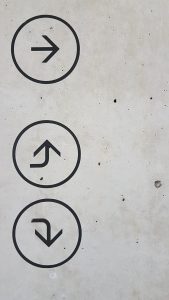In the second part of our mini-series All About Job Descriptions, we described the essential content to be included in any job description. In this last part we get more pragmatic: How do you begin the compilation process and which things should you keep in mind to successfully create effective job descriptions?
Set up
 Ideally, start by setting up a project team. Gather some of your knowledgeable HR colleagues and other subject matter experts. One person alone will not have
Ideally, start by setting up a project team. Gather some of your knowledgeable HR colleagues and other subject matter experts. One person alone will not have
the necessary knowledge about all existing jobs in a company. Aim for the highest quality team possible – saving money at this point will result in higher costs at a later stage of the project. If you can’t find the support and knowledge internally – don’t hesitate to search outside of your company. It will likely be a good investment.
When you have your team in place, sit down, and agree upon a timeline. It should be realistic but leave enough space for high-quality work.
Method
There are two common ways to generate good quality job descriptions. 
- Start by assessing the current jobs within your company. Gather all information by involving the various departments and conducting workshops together with the subject matter experts (i.e., department heads) and the employees that are part of the role or job family you are assessing. They know best which tasks have to be included and which skills are needed for a specific role.
- Alternatively, you can start with market benchmarks: Analyze the roles which your competitors are currently looking for. How do their job ads look like? Which skills are they looking for? Will you need similar skills within your workforce in the future? With this approach you would start by defining the objective and then work your way back through the job architecture from the desired jobs to the job descriptions for today’s roles. We recommend this approach when transformation is the main driver for your project.
Writing
Regardless of the choice of methodology, there are a few tips that will be helpful in any situation.

- Write with your employees and their reality in mind. Make sure that you have understood the purpose, processes, and targets of a job. Don’t forget about the intersections and relations to other stakeholders.
- Don’t use jargon or buzzwords. This is meaningless content that causes lengthy descriptions which nobody will want to read or use.
- Be attentive about your use of adjectives, e.g., differentiating a “complex” from an even “more complex” work situation. These descriptions only serve to justify a specific grade for a job. Our tip: Keep your descriptions clean from any kind of evaluation. If you want to indicate a reasoning for the value of a specific role (job grade), create a distinct field for that purpose.

- Be specific. But also, be abstract enough to use parts of a job description for another role when applicable. There are many intersections in between roles, and you should take advantage of them to increase your own efficiency. It also helps to have a similar wording for similar situations.
- Be clear about the environment of a job, whether it’s more target-oriented or more process-oriented. Style and content of the accountabilities should reflect this appropriately.
- Have someone review the job descriptions. Ensure at least a four eyes concept.

- Job descriptions should be consistent to be of true value. Set guidelines before your team gets started and make regular cross checks to increase their quality and usability.
- In organizations of up to 1.000 employees you will be able to organize the process in an Excel sheet. From that point on, complexity rises sharply. You might be better served with a dedicated software.
- Job descriptions should be a living organism. They only unleash their true value for HR tasks – and specifically for strategic workforce planning – if they reflect the organization’s reality. Update them occasionally. Implement a process for continuous updates before you announce the project as successfully completed.
For a comprehensive overview of how to maximize the value of job descriptions in your company, have a look at The Ultimate Guide to Job Architecture. Your final job descriptions will lilely look a bit different because you write for your own, specific reality, but our sample can give you an idea of what is considered an effective job description to work with.
